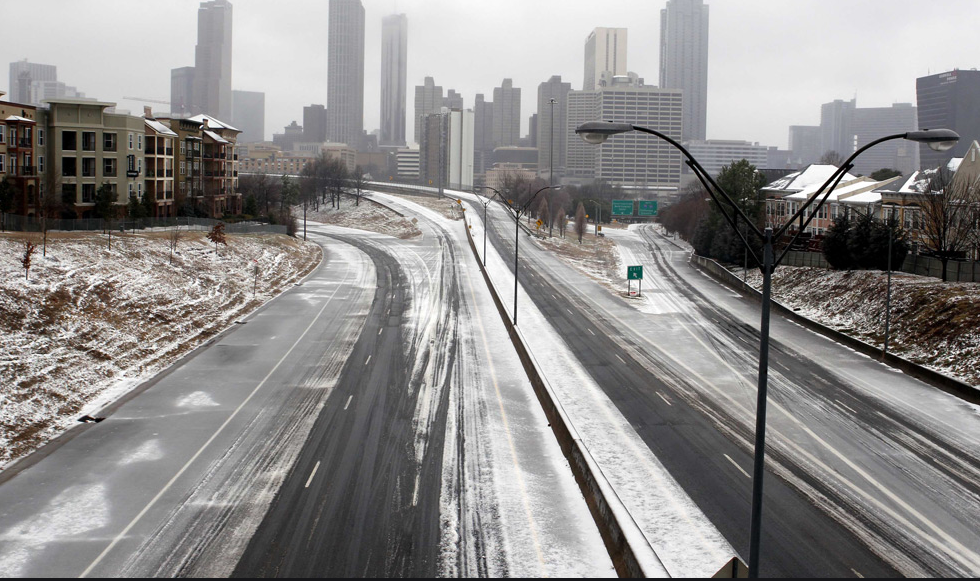I like winter. I really do. The cold can be bracing, but it is also refreshing. There is something life affirming about seeing one’s breath as it floats in the air. And the snow often has a mystical quality about it, even as it always gives way to a more down-to-earth reality. It falls quietly, even in blizzard conditions. It blankets everything in its path with a degree of equanimity that is both amazing and, in a certain way, comforting. It appears pure—hence the phrase “pure as the driven snow”—and thus reminds us of such a possibility, but before long it bears the footprints, tire tracks, and other markings of life and activity that remind us no less how nature is subject to human presence and how provisional any appeal to purity always is. But even at that our sense of winter often leaves us with romanticized images of a wonderland with children bundled in snowsuits sledding down hills. Such a view is just a little bit too much like a scene from Norman Rockwell, of course, and even at its pragmatic best it ignores the harsher realities of snow and ice and sub-zero temperatures and all of the miseries that this can too often entail. The photograph above is a case in point as it pictures a landscape in which winter has brought all commerce—indeed, all human activity— to a halt.
The road above leads into the city of Atlanta, the ninth largest metropolitan area in the nation. Georgia is not accustomed to snow and ice storms and this winter the meteorological patterns have been especially cruel with two major storm fronts separated by only a few weeks. Several weeks ago in the midst of the first storm the road above was literally covered with abandoned cars as drivers surrendered to the snowy and icy conditions and found their way home or to shelter on foot. That scene had a comic quality to it as major thoroughfares were reduced to ad hoc parking lots. This time around, however, what we see is eerily apocalyptic, somewhat akin to a ghost town. The markings and vestiges of civilization are prominent, but all humanity is absent, the barest of life erased from a scene reduced to the conditions that nature has ruthlessly and arbitrarily imposed upon it. The city rises tall in the hazy background, its promise as a haven of progress and culture and community altogether inviting, but the black ice that covers the roads leading into it—barely seeable and all the more treacherous for that very fact—make it appear impossible to approach and enter. The line between comedy and tragedy, it seems, is ice thin.
Soon the snow and ice will melt, of course, and people and vehicles will once again populate the roads leading to and from the city. Commerce will return and all will be normal, at least until the next catastrophic weather event appears. It could be a drought or a tornado or a hurricane, it is hard to say. But whatever it is it will remind us—once again—that we are subject to forces that, like the black ice above, can be hard to see, but that doesn’t mean we can ignore them. Or put differently, we ignore them at our peril
Credit: Tami Chappell/Reuters

Discussion